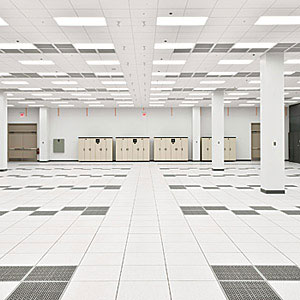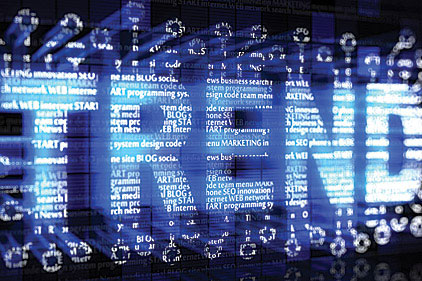The data center world in general has gone from an arena that existed in the background of the corporate, development, design, and media worlds, to a recognized growth sector with one of the bigger financial upsides in today’s economy. There has been a rapid increase in manufacturers, developers, operators, and support industries during the last few years seeking to capitalize on this potential growth area. While that is a healthy and natural phenomena for the industry, it does bring with it some amount of salesmanship and confusion when it comes to what is actually happening in the data center world.
The industry is particularly susceptible to promotion of “trends.” Go to any industry blog, conference, or symposium and design trends will be an advertised topic, often the main topic. The data center conference culture is rife with information sessions about today’s trends that have often evolved from opportunities to learn to opportunities to sell a product. We have a constant flow of new entrants of manufacturers, developers, and vendors that all can at times refer to their offering as a trend. It’s an easy way to grab attention in the industry, regardless of your motivation. Exciting topics like co-generation, renewable energy, super low PUEs, and containerized data centers are all easy targets for this hype.
THE ROLE OF THE DESIGN TEAM
So how does someone know if something that is proclaimed as a trend is actually a trend? What if you are tasked with leading a project and the C-suite tells you that the new corporate data center has to use renewable energy as its primary source, or use containerized solutions instead of conventional construction because “that’s where the industry is trending”?
The data center industry is arguably the most nimble tool the business world has today. It has a mentality that is grounded in the quiet operations culture that exists in the background of the industry. The people who have owned and operated the world’s data centers are all focused on finding the next best way to do things. They can’t sit comfortably and watch their systems become outdated and inefficient. They have pressures from the business side to find lasting solutions, capacity, and efficiencies in their day-to-day operations. That pressure is what causes a real trend in our industry to happen.
There isn’t always an easy answer to what actually constitutes a trend, but there are people that can help. While a lot of the new entrants are contributing to the confusion, there are people that have been the common thread as the real trends have occurred. The design industry is one of those threads in the data center world.
There has long been a working link between the design and operations of data centers. The owner/operators make the tough decisions on new technologies, but they rely on their design teams to validate those decisions and implement them properly. Salesmanship is a huge aspect of any new data center technology, but sooner or later you have to deal with those pesky laws of physics, which in the end govern every aspect of the data center. The design team is the only party qualified to interpret how the next best thing reacts to the laws of physics in the context of the built environment.

|
|
Figure 1. Design trends in data centers are often facilitated by the owner/operators such as liquid-cooled equipment in the data hall. Photo courtesy of Greg Folkins. |
DETERMINING ACTUAL TRENDS
The industry as a whole might benefit from re-visiting the definition of “trend.” As defined by Merriam Webster it is “to extend in a general direction, follow a general course” or alternatively “to veer in a new direction.” The common use of the trend label in our industry normally includes the connotation that something is being broadly adopted by the industry and that adoption constitutes a dramatic new direction.
While that would be a correct definition if it were actually true of all the things it was applied to, it doesn’t capture the essence of the real trends that happen in our industry. It overemphasizes the dramatic. The definition “to veer in a new direction” is actually a more accurate description of the real trends that occur in the data center industry. Trends in our industry almost always have three common traits: they took a long time to be broadly adopted, they impact a large cross section of the industry, and they change to meet the changing need.
IDEC technology is a perfect case study for the time factors associated with a trend in the industry. This technology has now established itself as a true trend for all the right reasons, although it took some time. The initial industry fever about the technology was more about salesmanship than actual application. The original Kyotocooling product was incredibly compelling to the technically minded data center crowd. A heat wheel wasn’t new technology when first brought into the limelight by Kyotocooling, but its specific application for the data center industry was innovative. The product was based on very solid science, which eventually led to much broader adoption by the industry. In fact, the very part of the technology that made it so interesting — the heat recovery wheel — probably delayed its broader adoption as other manufacturers used indirect exchange media with a more efficient overall footprint to gain ground. Overall, the IDEC industry has had huge success and affected enough of the industry to be a true trend, but the process took 10 years to produce the saturation in the market to get there.
TRUE TRENDS CHANGE THE INDUSTRY
The facts behind many of today’s so-called trends are that they are individually excellent solutions for specific needs, but aren’t necessarily changing the industry. They might be micro-trends or the beginning of a real trend, or they could just be solutions for a small, specific segment of the data center market.
Take just one of the most prevalent topics from today’s data center “trend” register — containerized solutions. Containerized solutions are one of the more regularly requested design options from today’s corporate users at the beginning of a design effort. There are several high-quality products by various manufacturers currently available. They each have merits (portability and efficiency to name a couple) that might make them attractive as a design solution in a particular situation. If you go to a data center conference, you can count on a major presentation slot given to one of the major providers of this solution. Containerized data centers have been touted as a trend in the data center industry for years, but does that actually make it a trend?
That depends on your perspective. Perhaps the answer is that they might be a trend at some point, but they aren’t yet. They certainly are a brilliant solution for certain situations, but they don’t constitute a large enough segment of the new data center market. Their portability limits their overall configuration and size. Their cost competitiveness with conventional construction depends on the specific regional labor market in the major trades. It is a relatively easy study to incorporate a containerized solution into an evaluation of data center options, but you do have to look past the salesmanship and examine the facts. Containerized solutions are a terribly attractive concept that could in the future become the way things are done most of the time, but that future hasn’t come yet. If evaluated as a true trend, containerized solutions probably need more time in broader application to make the cut.
The final piece in evaluating a trend is reviewing its ability to react to new requirements. The more resilient trends tend to accommodate change fairly readily, which is a credit to the manufacturers behind a lot of them. Thirty-five years ago, it wasn’t uncommon to have liquid-cooled mainframe equipment on the data hall floor. That was a trend driven by the technical challenges of the IT hardware of the time. It was a brilliant solution that for a while changed how some parts of the industry’s compute needs were provided. Looking back 10 to 15 years, the presence of water cooled equipment in data halls trended downward as the IT hardware industry found other ways to satisfy the compute need.
Flash forward to today and products are available using water and other liquids to satisfy certain compute needs; these solutions are in a range of maturity. All are based on solid, but not necessarily new science. They aren’t a new trend in and of themselves, but they are part of a long-standing use of liquid on the data hall floor. Their current impact is a slight veer in a new direction, but the liquid-cooling equation has existed quietly for quite a while. This is an example of a trend that is changing over time to meet a changing need.
The strongest owner/operators in the industry have caused the evolution of the data center firsthand. The evolution of the data center is now, and has always been, a series of incremental adjustments to the basic required systems. These incremental adjustments are being determined every day as existing data centers are operated and the next data centers are in design. The data center design professionals that specialize in the project type have been a major part of that evolution. The incremental adjustments that make up the evolution become the trends. The next UPS technology, the next cooling solution, the next approach to controls all require courageous decisions by the data center owner/operator with support from their design team to start a true trend. These courageous decisions are required to maintain the data center as a nimble, efficient, and profitable corporate asset. The people that make up the ownership/operations side of the data center industry understand this. Ultimately, they are the people that establish trends.



